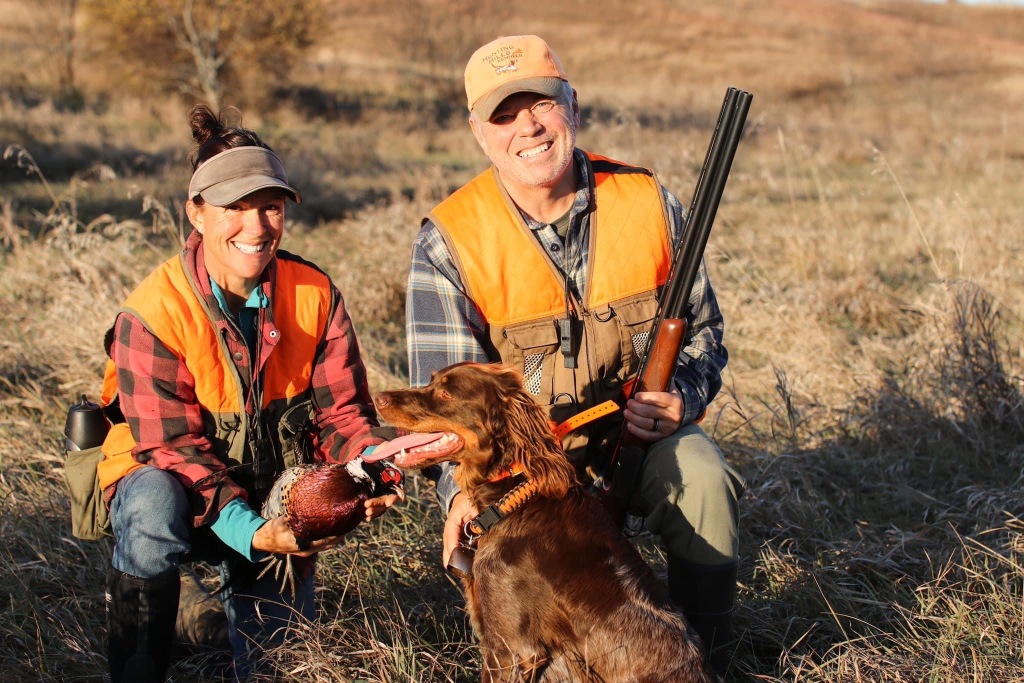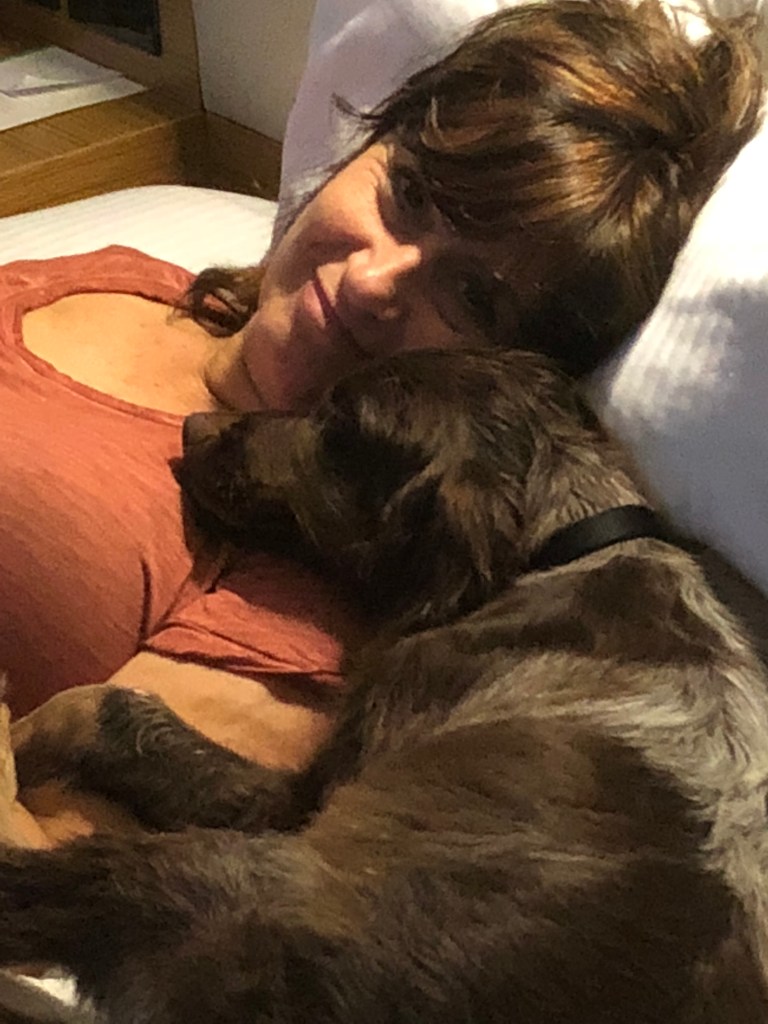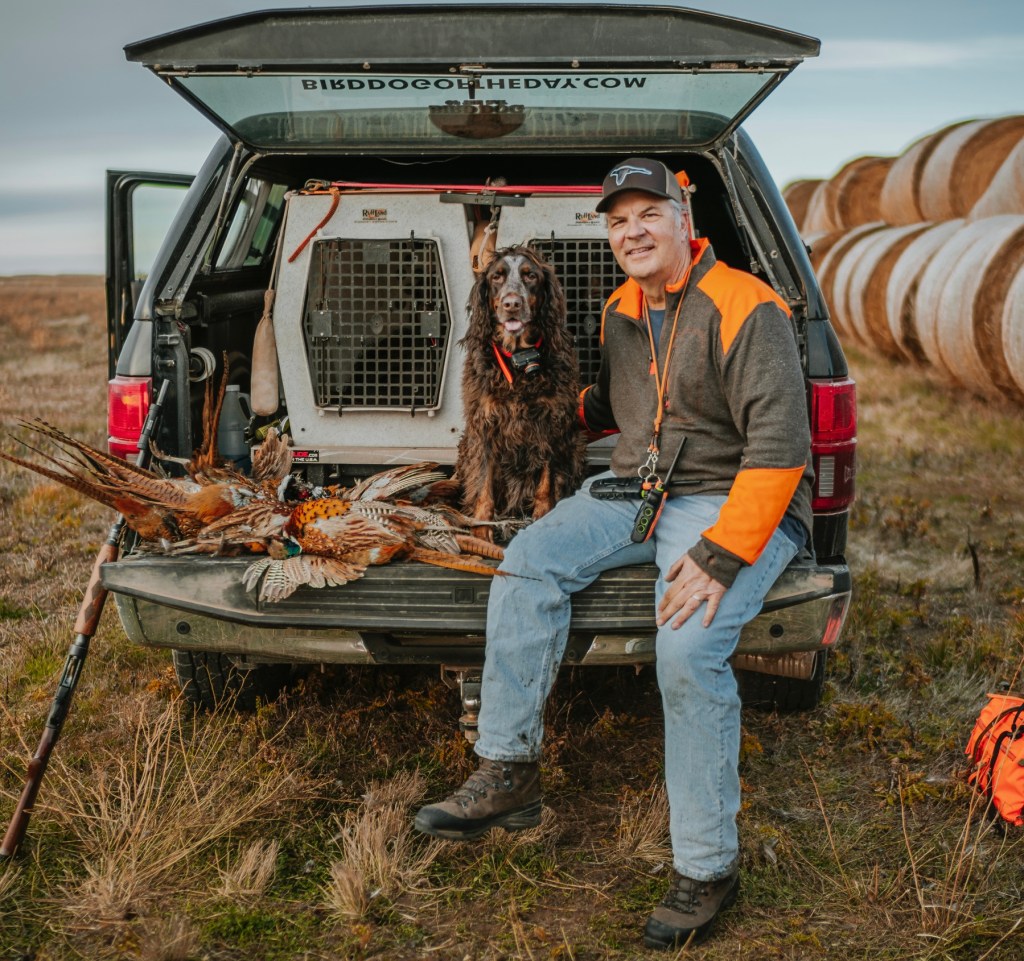A short read about puppy readiness by Castiron Kennels and Mountain View Kennel who own, hunt and breed Picardy Spaniels.

“My Picardy Spaniel Sherlock had all the pieces to be an excellent dog. He loved everyone, excelled in obedience, and mastered every obstacle on the agility course. When we started hunt training I continued to spend the same amount of time working with him on obedience and agility. It was fine until the second fear period hit and he suddenly refused to hunt. I had overloaded his brain. It took 7 months for him to come around and want to search for birds and point again.”
Courtney Benson, SS Sport Dogs
Fear periods are a normal part of a dog’s development. They’re nature’s way of helping ensure that a puppy learns what’s dangerous/life threatening and what’s normal/safe. During these periods puppies are more sensitive to their environment and to interactions with other dogs, people and even inanimate objects like vacuum cleaners and hats. Fear periods typically last a couple of weeks and as long as you recognize them, they’re relatively easy to manage. If not handled properly your puppy may become hardwired to fear whatever scared them during a fear period for the rest of their life. A puppy’s first fear period occurs somewhere between 8-12 weeks. This coincides with the time your puppy is headed to their forever home…leaving their mother, their alphas (breeders) and the only environment they’ve ever known. The second fear period is also about 2-3 weeks long and will come on suddenly sometime between 6 months and 2 years of age. Typically this occurs earlier with smaller breeds and later with larger breeds like the Picardy Spaniel. If you’ve had or been around teenagers you’ll recognize the parallels…seemingly irrational behavior that appears to be rooted in nothing substantive.
Ellen: “To help puppies deal with fear periods later in life we use an early neurological stimulation program commonly referred to as SuperDog. This protocol exposes the pups to stimuli that are slightly uncomfortable, like being placed on a cold, wet surface for a few seconds. Research strongly suggests that this program has important and lasting effects on puppies, including more stress tolerance and greater confidence and resiliency. Building resilience to stressors from a young age translates to more resilience at a later age. We also do a number of other things to help our pups be able to adapt to stressful conditions as such situations can become a major hurdle for a pup going through a fear period.”
Mike: “Fear periods can be a challenge, but they are also an opportunity. If handled correctly, you can really build your puppy’s trust in you as a wise, fair, and dependable pack leader. In these periods put extra emphasis on controlling your puppy’s environment and use lots of positive reinforcement. That doesn’t mean that you should baby your pup because your “over protectiveness” can send the wrong message as well. You don’t want to signal to your pup that s/he has good reason to be afraid. Be observant, thoughtful, and calm. Both you and your pup will emerge from those times better for it.”
Managing Fear Periods
Learn to “read your dog” so you can tell when they’re stressed or afraid. Signs of stress/fear can include behaviors such as yawning, excessive barking, panting, whimpering, growling, disobeying, freezing, cowering, pacing, hiding, running away from someone/something, etc. Watch your dogs’ tail as well. Is it held high in a confident position, lower in a more relaxed position, or is it low or even tucked, which is a sure sign of “I’m scared?” Hunters know that a dogs’ tail telegraphs what’s going on afield. And every dog’s telegraph code is a little different, so start learning to read your puppy’s tail from the time you bring him/her home. Pay attention to their ears as well. Are they erect and high indicating the puppy is on alert, more relaxed indicating they are doing just fine in their environment or with an interaction, or pinned back as if they are ready for a “fight-or-flight” response.
Manage your own stress and body language around your puppy. They both play a big role in successfully navigating puppy fear periods. Are you always worried you might do something wrong with your puppy? Are you and your partner irritated with each other? Are you angry with your boss and that anger comes home with you in the form of internal frustration or external outbursts like verbally venting to your spouse or throwing your keys on the counter? Puppies read our body language just as they do that of other dogs. In nature they key in on visual cues and react accordingly, especially those given by their alpha pack members. They are also very attuned to your nonverbal stress…consider support dogs that can predict a seizures or migraines before they manifest externally.
Don’t overwhelm your puppy, nor pressure them to do anything. Puppies are learning all day, every day, so let them learn and provide them a positive environment in which to do so. Something akin to “Canine Kindergarten.” While we want children to learn in Kindergarten, we also want them to be exposed to a rich socialization environment, exploration opportunities and introductions to new things. If a child is initially afraid to go down the slide on the playground no one forces them to do it. Eventually, after watching others have fun on the slide, most children decide to give it a go themselves. Let your puppy explore and interact at their own speed. They run the accelerator, you steer. Lastly, just because your puppy is smart and learning commands and tasks quickly doesn’t mean they are ready for more. Slow and steady is the proper mantra for training a Picardy Spaniel, because you don’t want to be pushing when a fear period materializes as it can happen quickly and without much of a warning.
Treat your puppy like a puppy with respect to expectations. By the second fear period your puppy looks like an adult, just like many teenagers look like adults. But, s/he is still a puppy from a mental perspective until ~2 years of age. Don’t force your puppy to do anything…keeping in mind what’s fun one day might scare the hell out of them the next. Working 40+ hours a week isn’t “fun” for most of us, but we do it. Not typically as teenagers, but rather as adults when we are more mature. Think about your expectations for your puppy in that framework. Puppies need to be exposed to the tasks that you will require of them as adults, but don’t expect them to master them competently and consistently until they are mature. A teenager can sometimes perform tasks with the same level of competence as an adult, but not likely with the same level of expertise and consistency as an adult. Just because your puppy can do a downwind blind retrieve one day doesn’t mean s/he can do it the next. The first one may have been sheer luck. So many variables come into play. Reward their successes, but don’t dwell on the failures. And don’t risk ruining their potential because you expect too much too soon.
Adapt and adjust activities accordingly. Successfully navigating fear periods doesn’t mean you need to abandon training and coddle your puppy. Rather you need to be prepared for any regression or rebellion and adjust your training plan and cadence accordingly. Remember, you’re dealing with some of the same issues as you would with a teenager. Sometimes there’s nothing rationale about their behavior, and it can change at any given moment. This is one reason we DO NOT recommend long, structured training sessions. Instead, we incorporate a couple of training activities into our dog’s every day activities. That way we can evaluate the “mood” of our dog and decide what, if any, training we will do on a given day. As an example, our Picardy’s love to fetch, and they get a maximum of 2 bumper tosses per day at random times during an off-leash run. If they aren’t listening well when we first get out of the truck and get going, odds are they won’t perform a fetch properly. So, instead of trying fetch we’ll either just play with them when they run by or just let them run off some energy. A tired puppy is a good puppy.
Copyright © 2023 by Castiron Kennels. All rights reserved. This post may be reproduced with permission.
Castiron Kennels and Mountain View Kennel are the only families in America who each own, train, and hunt 4 Picardy Spaniels. There are only ~320 Picardy Spaniels in North America, and Ric and Mike are some of the first Americans to import Picardy’s from Europe. Castiron and Horizon both donate their time help other US Picardy Spaniel owners with training, virtually and in person. Mike also owns Bird Dog of the Day, and Ric and Ellen sponsor the Picardy.org website for the US Picardy Spaniel Alliance.
Ric, Ellen and their Picardy Pack live in New Glarus, WI just 25 minutes southwest of Madison. A lifelong hunter, Ric has trained and hunted Small Munsterlanders, Gordon Setters, and for the past 7 years Picardy Spaniels. Ellen has an extensive background in animal genetics and a PhD in Reproductive Physiology. She bred and trained Greater Swiss Mountain Dogs prior to Picardy Spaniels. Since 2019 Ric and Ellen have traveled to Europe annually to meet with international Picardy Spaniels breeders to learn more about training this unique breed as well as to identify bloodlines that will broaden and deepen the gene pool in North America. In 2023 they attended the French National Breed Show and met with President Serge Guilbert to discuss ways to better track Picardy Spaniel breeding efforts and individual dogs globally. They are also the only breeder that has sent a North American whelped Picardy Spaniel back to France.

Mike and Lori live in Southwest Florida, but Mike takes their four dogs to Montana each Fall to hunt Prairie Grouse and Hungarian Partridge. Mike’s dog Tilly was one of the first in North America when she arrived in February of 2017. Lori fell in love with Theo on the breeder’s website and she brought him over to the States in 2018. Gus and Flirt are brother and sister and joined the pack in 2019. They were supposed to be trained up by Mike and sold as started dogs. That plan didn’t last until the airport exit before they squirmed their way into his heart permanently. Mike does the training and hunting while Lori focuses on the cuddling.

